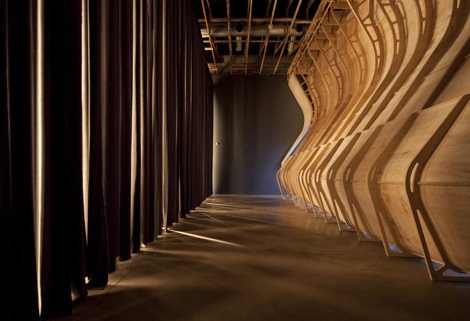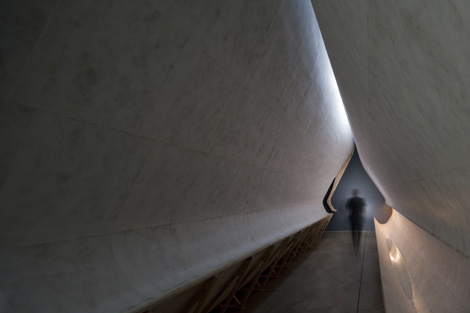If the concept, and discomfort, of “90 Days Over 100º” resonates with you, circle in red the evening of Thursday, Sept. 16 to visit the

Beginning at 6:30 p.m., SMoCA will host the closing event for the first of its continuing “Architecture + Art” series, with Associate Curator Cassandra Coblentz,
Most museum guests are familiar with Phoenix/Scottsdale summers, during which temperatures exceed 100 degrees for more than 90 days. Atherton and Keener’s walk-through installation, “90 Days Over 100º” explores issues of desert urban life by showcasing the temporal and physical qualities inherent in the phasing of water from solid to liquid. It also underlines issues such as the importance of materials economy and functionality.
Atherton and Keener will discuss the installation and answer questions, and Professor Anbar, professor in the School of Earth & Space Exploration and the Department of Chemistry & Biochemistry, will take the discussion of water out to the cosmos, speaking about the future habitability of Earth as well as the effects of the existence or overexistence of water on other worlds.
In a process of exploration, discovery and reevaluation, patrons walk through the cooling tunnel-like installation — a “forest of hanging fabric” says Atherton —assembled of “s-shaped” plywood sheathing on which Tyvek® waterproofing material is draped. Through this, water trickles from overhead channels where frozen water slowly melts from sun rays filtering through the museum’s skylights.
Tucson-based lighting designer Claudia Kappl has participated as well as structural consultant, Tom Reiner, who studied architecture at the
An evaporative cooler of sorts, the installation celebrates desert light and color as the water phases from ice block to flowing drip to collection in foot-level troughs. Viewers experience a temperature drop, hear the sound of ice cracking and shifting and the drip hitting pooled water: The basic elements of survival — light, water, sound — are forefronted.
Most importantly, the project highlights the fragile relationship between water and electricity in a super-urbanizing desert in which the artificial means to survive, such as air-conditioning, intensify the challenges of living here: the desert-island effect from pollution, concrete and asphalt and the increasing demands on the power grid. Living in, and for, the beauty of the desert, we set ourselves at odds with it.

This first installation of the Architecture + Art series ends Sept. 19, so attendees have a few days to return, if they can. Next summer, the project continues — offering continuing opportunities for
“Having ‘90 Days Over 100°’ on display this summer has had a profound effect on our audiences in that it offered an usual, and often unexpected, sanctuary for reflection,” Coblentz says.
“Entering into the cool installation from the extreme heat outside, one could not help but become aware of the vast difference in sensory experience, and we can only hope that this orchestrated experience has given visitors pause enough to reflect on the impact of their daily experience of moving in and out of climate-controlled environments.”
“The structure, as architecture, does not have a practical purpose or application outside of the museum,” explains Cy Keener, who grew up in the Northwest, climbing
For him, practical concerns for structure and experience meet the abstractions of experience and memory: “There is the physical experience of being inside the installation, which has practical aspects to it such as the dropping of temperature, acoustical resonance of dripping, bodily awareness of narrow space, highlighting of water rivulets, and shifting of daylight.
“But there is also the memory of that experience, and the consideration of it in moments after it has passed. It is my hope that both the experience itself, and the recollection of it, offer opportunities for reflection of how we relate to our environment and the constantly changing processes that enable and support our lives here.
“When the practical is mixed with the abstract, I hope the resultant mixture resembles that of the imagination,” adds Jay Atherton, who attended
